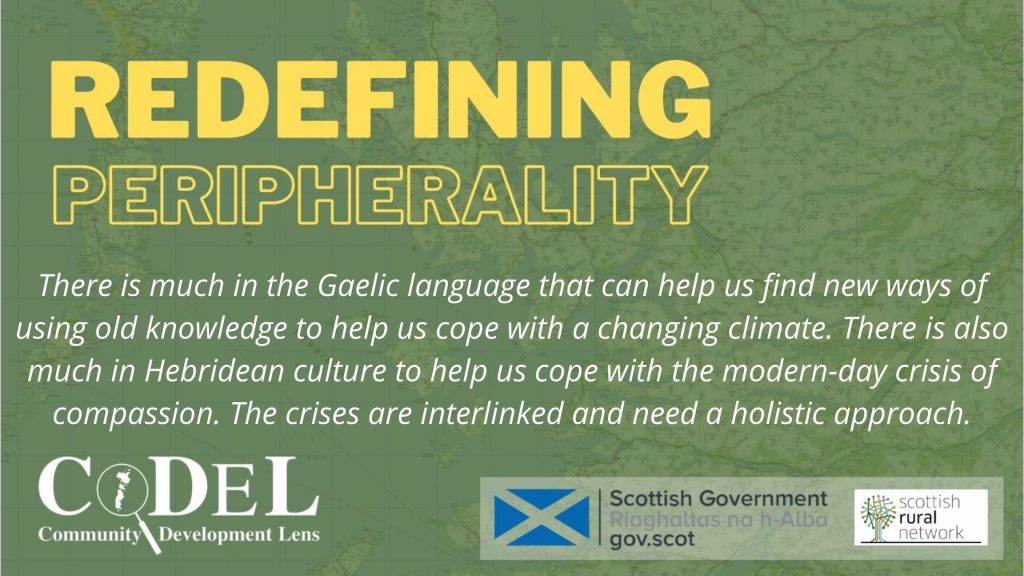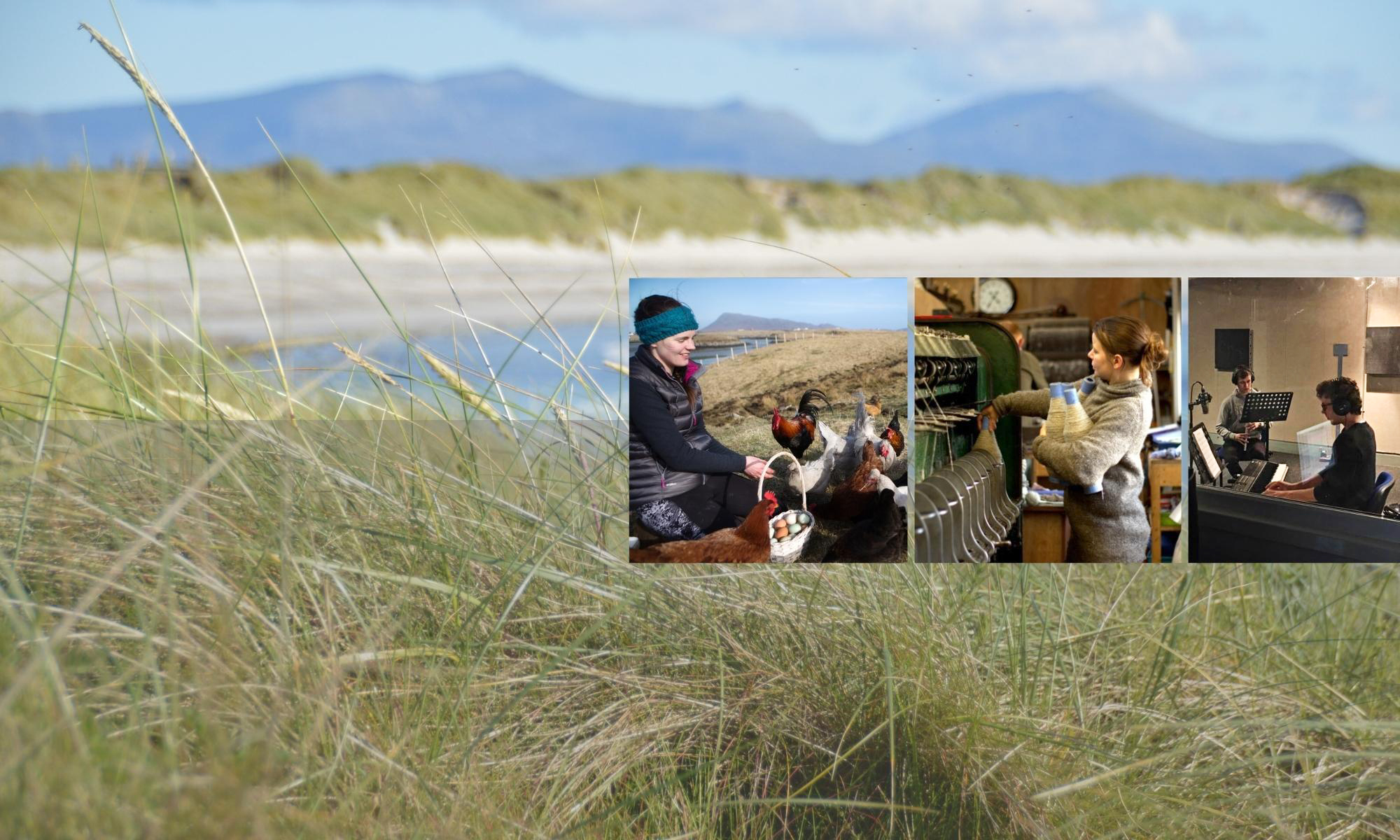
by Ryan Dziadowiec. Ryan is a PhD student currently based in the Isle of Grimsay whose thesis is “Dùthchas: Locating and Nourishing the Roots of Scotland’s Land Reform Revolution”. He is interested in crofting and the way people relate to land. When not at the desk he likes all things cows and going swimming in lochs.
On an unbelievably sunny day in September 2021, I climbed Beinn Shlèibhe, the tallest point in Berneray. I had been living in the Outer Hebrides for just over a month at that point, and had already done my fair share of banter with friends over WhatsApp and email about my recent move ‘to the edge of the world’. Before coming to the Outer Hebrides, I had lived and worked in Skye, and before that I had spent a few years doing different jobs up and down the Highlands in mainland Scotland. I was already used to Highland living and to people asking me what it’s like to ‘live in the middle of nowhere’. But I remember that, somehow, moving to Uist felt different. It came with an apprehensive feeling of going somewhere that was very far away. Uncharted territory, at least for me.
Standing on the summit of Beinn Shlèibhe in all its 93 metres of glory on that balmy September day, I felt the rock and soil beneath my feet shifting. Earthquake-like, my pre-conceptions and apprehensions split apart and tumbled down the hill, into the sea. I found myself experiencing a paradigm shift and I knew things would never be the same again. Up there, I found myself seeing a country which doesn’t, to my knowledge, feature on any maps: Dùthaich MhicLeòid, or MacLeod Country.

The Gaelic scholar John MacInnes once said that the word dùthaich – like dùthchas, a concept I am researching – cannot be translated into English without losing its ‘emotional energy’. The Dùthaich MhicLeòid which I was looking at from Berneray is so much more than ‘MacLeod Country’. It is a richly storied mythopoetic landscape; it is made up of many miles of geologically diverse islands, each with a unique identity though all united by the Gaelic language; it is the native place of MacLeods as well as many other kindreds and clans. Dùthaich MhicLeòid is a world of its own – and in favourable conditions, a birlinn could take you across the Cuan Sgith or Minch to another island, another dùthaich (the Gaelic name for Sutherland is Dùthaich Mhic Aoidh or MacKay Country, for example). Or you could travel onwards to Ireland, Scandinavia, and continental Europe. So much for ‘the edge of the world’. After my paradigm shift, I was looking at the centre of the world. I’m not the only person to have experienced this effect, either. Sabhal Mòr Ostaig’s professor Hugh Cheape has described his own experience of ‘paradigm shift’ back in 1984 when he visited South Uist:
“Conceptual clichés of periphery and centre flipped over and slipped away. In an eurocentric and anglocentric culture, cities have been at the centre and islands at the edge. [In Gaelic], periphery or edge is iomall and it has been traditionally perceived that iomall na Gàidhealtachd was not the Outer Hebrides but places such as Dumbarton, Dunkeld, Blairgowrie and Braemar… Here, on the west coast of Uist and on the doorstep of Tobha Mòr, was the self-evident highway of the oceans leading west and an ‘Atlantic corridor’ leading north and south.”

On that sunny September day, I could imagine a MacLeod chief taking his heir up Beinn Shlèibhe and saying something akin to Mufasa’s speech to Simba in the Lion King: son, everything the light touches is part of our kingdom. Evidence of this kingdom is still etched into the dùthaich: Dunvegan Castle is just the famous tourist trap. Back in the Middle Ages, what is now a heap of stones on Pabbay was the castle of the MacLeods of Harris, where Tormod MacLeod died in 1320. Near the hostel on Berneray there is a cluster of old byres and outbuildings known as ‘MacLeod’s Gunnery’, with a plaque commemorating a Tormod MacLeod who was born here three centuries later. The dùthaich stretched as far out as St. Kilda which the MacLeods had the right to for some time; in 1549 Donald Monro wrote that MacLeod would send a man to Hiort annually at midsummer to collect the rents from the tenantry or tuatha. If the weather was fair, I can imagine no better place to watch the sun plunge into the sea in the distant north-west about 11PM on those glorious summer days.

How can we, today, benefit from standing about on hills and thinking of places like Dùthaich MhicLeòid? There is a wealth of knowledge that can be drawn out of the well of history. But we should look carefully at what we’re drawing up and see if it will nourish us. The sorts of clan chief tales told on Highland tour buses are typically still concerned with romantic notions of Jacobites in kilts in bygone days. They rarely tell of the clan chiefs as rack-renters, blackmailers, kidnappers, warmongers, thieves, or slave traders. But that is what many, if not most, of them became – particularly in the 19th century when the chiefly castles which attract so many visitors every year were (re)built. The 22nd chief of clan MacLeod, Tormod (1705–1772) was remembered by his tuatha as ‘an Droch Dhuine’ or ‘the Wicked Man’, and for good reason. There is much more nourishing knowledge to be re-gained from studying the ways of the tuatha – the tenantry – than the Droch Dhuine himself.
From the tuatha we can get a glimpse of what Dùthaich MhicLeòid was like before the demands of commercial landlords forced the wealth of this ‘periphery’ to be shipped to some distant ‘core’. From their patterns of land use – like ‘run-rig’ or the annual redistribution of arable land, the tradition of common grazings, and seasonal movement of cattle to shielings – we can infer that for most of history, they had communal rights to at least some of their people’s territory. From their proverbs – breac à linne, slat à coille ‘s fiadh à fìreach: mèirle às nach do ghabh Gàidheal riamh nàire – we can infer that they also enjoyed implicit rights to fish, game, and wood. There were no written laws stating the rights that people had to these, as well as myriad other resources edible and inedible, possibly because the rules that governed this were both obvious and sacred to the people. Estate management became increasingly systematised and written rather than oral around the same time that the peoples’ customary rights were being eroded. There is an undeniable bias in the estates’ sources towards documenting the enforcement of laws banning the taking of game or seaweed, or evictions of folk who never had a written lease before. Only from the tuatha’s reactions to these can we see what laws the people knew to be right and just for all.

In today’s utterly commodified world, governments struggle to see the wealth of this ‘periphery’. They see low population density resulting in little tax revenue to be made. They see a land in constant need of importing everything: government money, human food, animal feed, medicine, fuel, electricity (pinging back up north via the National Grid at a hefty premium, despite most of it being generated in ‘the north’ from renewable sources), and even people to tackle demographic decline. But wealth comes under many guises and this ‘periphery’ has done its fair share of export: kelp ash, rent money, cattle, marble, diatomite, slate, gravel, and – most importantly – people. Dùthaich MhicLeòid may not have vast reserves of oil or old growth forest ripe for exploitation by the forces of international capital, but it has immeasurable stores of cultural wealth that those in government are reluctant to recognise. The words of Màiri Mhòr nan Òran, renown Gaelic bard, come to mind:
Cuimhnichibh gur sluagh sibh / Is cumaibh suas ur còir
Tha beairteas fo na cruachan / far an d’fhuair sibh àrach òg…
Remember that you are a people / and stand up for your rights;
wealth lies beneath those mountains / where you spent your early life…
The recently-published bilingual anthology of poetry and prose by Alasdair MacIlleBhàin, maim-slè, feels like a journey across the Isle of Mull. Reading it, I felt like a wallflower listening in to conversations Alasdair was having with the folk of his native island. Alasdair’s sensitive relaying of Mull seanchas or local lore peeled back the bracken and Sitka spruce which covers much of the island’s native settlements from before the Clearances and crofting, revealing the riches beneath. Through his research, he often comes across names – like Loch Leamhain or Bròlas – which are seldom used today, not unlike Dùthaich MhicLeòid. Most pertinently, Alasdair MacIlleBhàin’s book explores the connection between tìr is teanga – land and language – and èiginn na gnàth-chànain agus èiginn na gnàth-shìde – the Gaelic crisis and the climate crisis.
There is much in the Gaelic language that can help us find new ways of using old knowledge to help us cope with a changing climate. There is also much in the Hebridean demeanor that can help us cope with the modern-day crisis of compassion. The crises are interlinked and need a holistic approach; but to see the issues we’ve always deemed as ‘peripheral’ flipped around to form the ‘core’ of the matter requires a paradigm shift – and these are rarely comfortable.
To come full circle, I want to share a song, Thèid mi le’m Dheòin, here performed by Alasdair MacIlleBhàin and Niteworks. The song was composed by the 17th century bard extraordinaire, Màiri nighean Alasdair Ruaidh. It was likely composed when the bard had been temporarily exiled to Mull for praising Tormod MacLeod of Berneray – yes, the one from the commemorative plaque mentioned earlier. Sailing back north, she sang, Thèid mi le’m dheòin do Dhùthaich MhicLeòid – willingly I shall go to MacLeod country. Hearing Màiri nighean Alasdair Ruaidh’s words today, nearly four centuries later, accompanied by synths and a pulsing bass, re-draws the shape of Màiri’s dùthaich, and re-positions us today at the centre of her world. A real place that pulses with life, whose pulse can teach an outsider like me how to find my bearings within.
Thèid mi lem Dheòin (feat. Alasdair Whyte)


I am finding this direction of research very interesting and a fresh lens on Gaelic concepts and thought which we can learn so much from. I’m looking forward to learning more and look forward to reading more of your research.
Thank you so much, Mairi, these encouraging words are greatly appreciated.